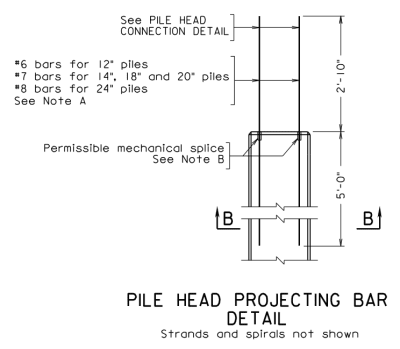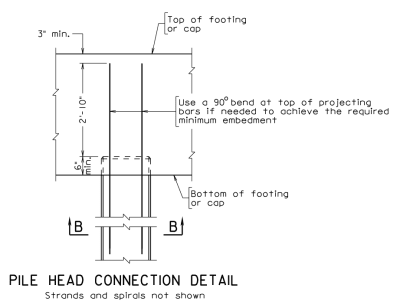structure_engineer
Structural
Fellow Engineers,
First of all, let me wish you all happy holidays and enjoy your time off.
I am looking for suggestions to connect square precast concrete piles to steel pipe rack base plate, using a Sonotube to cast the pedestals on top of the precast concrete piles. My concern is for tension or uplift. What is the preferred detail to use to ensure a good connection for the uplift due to high wind in the Gulf coast region (over 160 mph)? The same goes to the concrete pile cap. For the concrete pile cap, it would be easier as the precast concrete pile is embedded into the pile cap? Could be as simple as breaking up the concrete in the precast concrete, and bent the rebars at an angle and dowelled into the pile cap? Or if you have a better suggestion that would be great. I was leaning toward using auger cast concrete piles but based on the input from the contractor, the location is not good for auger cast concrete piles as the auger would get stuck by tree stumps and there are a lot of the dead trees in the region. Your input and time are most appreciated. Cheers.
First of all, let me wish you all happy holidays and enjoy your time off.
I am looking for suggestions to connect square precast concrete piles to steel pipe rack base plate, using a Sonotube to cast the pedestals on top of the precast concrete piles. My concern is for tension or uplift. What is the preferred detail to use to ensure a good connection for the uplift due to high wind in the Gulf coast region (over 160 mph)? The same goes to the concrete pile cap. For the concrete pile cap, it would be easier as the precast concrete pile is embedded into the pile cap? Could be as simple as breaking up the concrete in the precast concrete, and bent the rebars at an angle and dowelled into the pile cap? Or if you have a better suggestion that would be great. I was leaning toward using auger cast concrete piles but based on the input from the contractor, the location is not good for auger cast concrete piles as the auger would get stuck by tree stumps and there are a lot of the dead trees in the region. Your input and time are most appreciated. Cheers.


